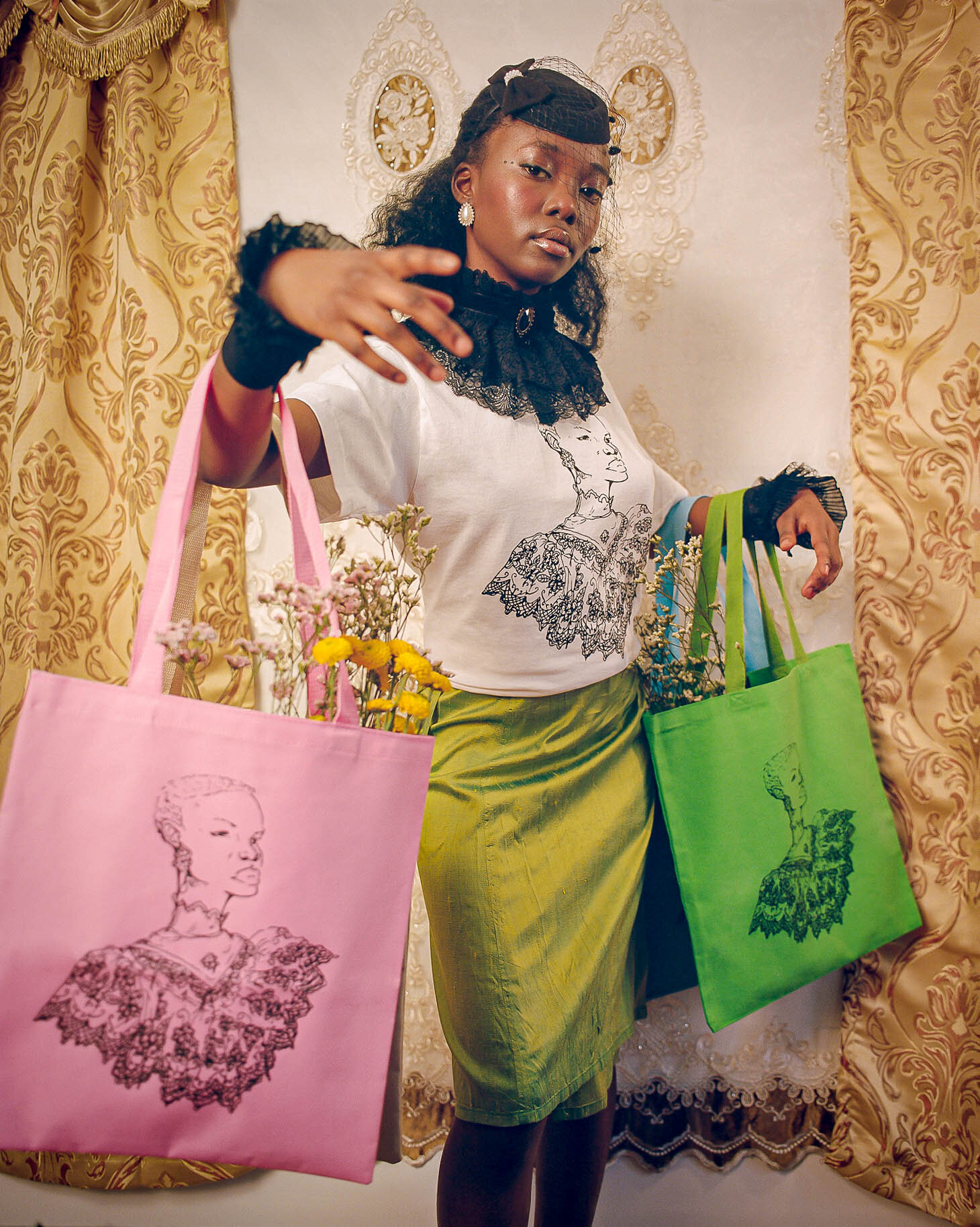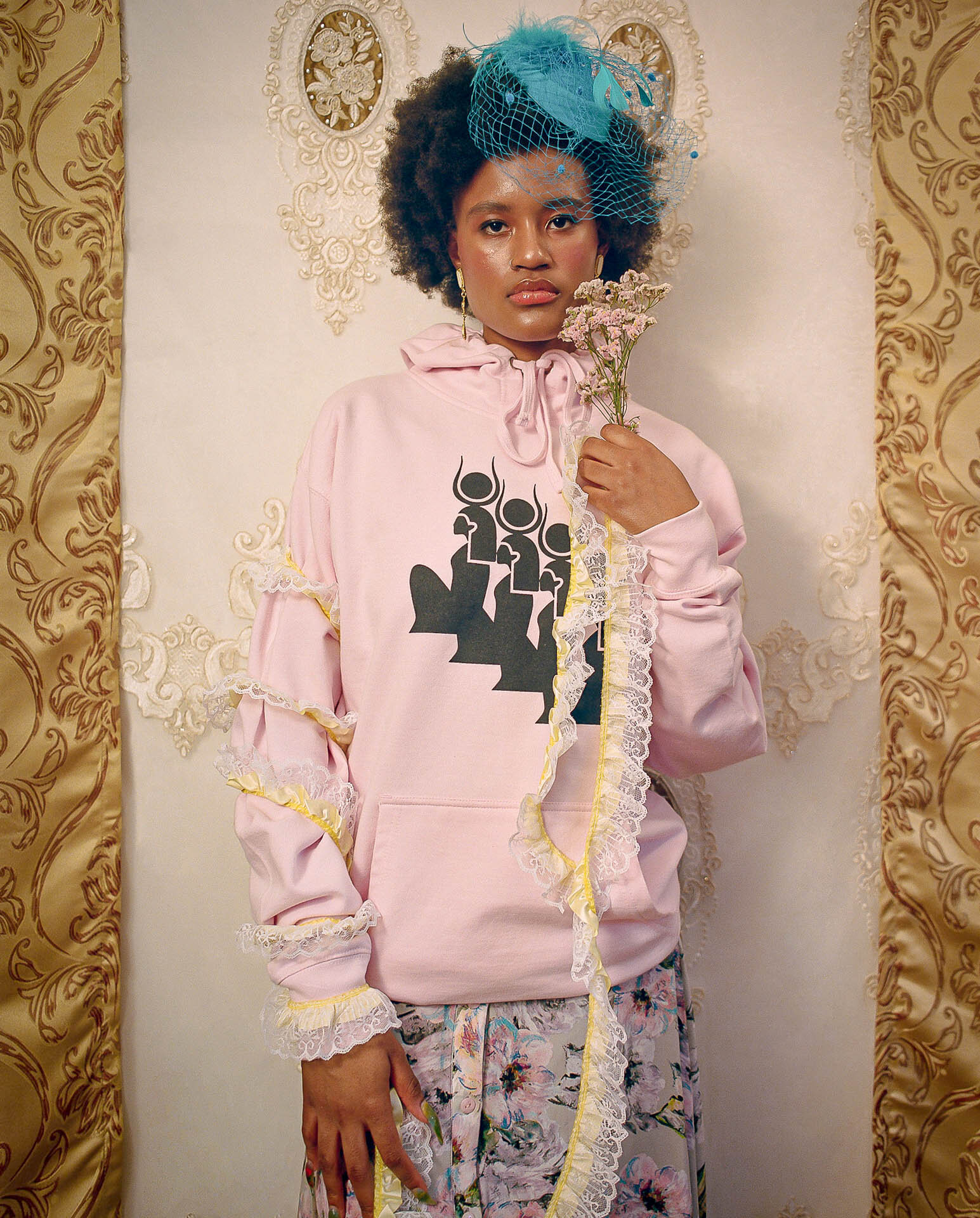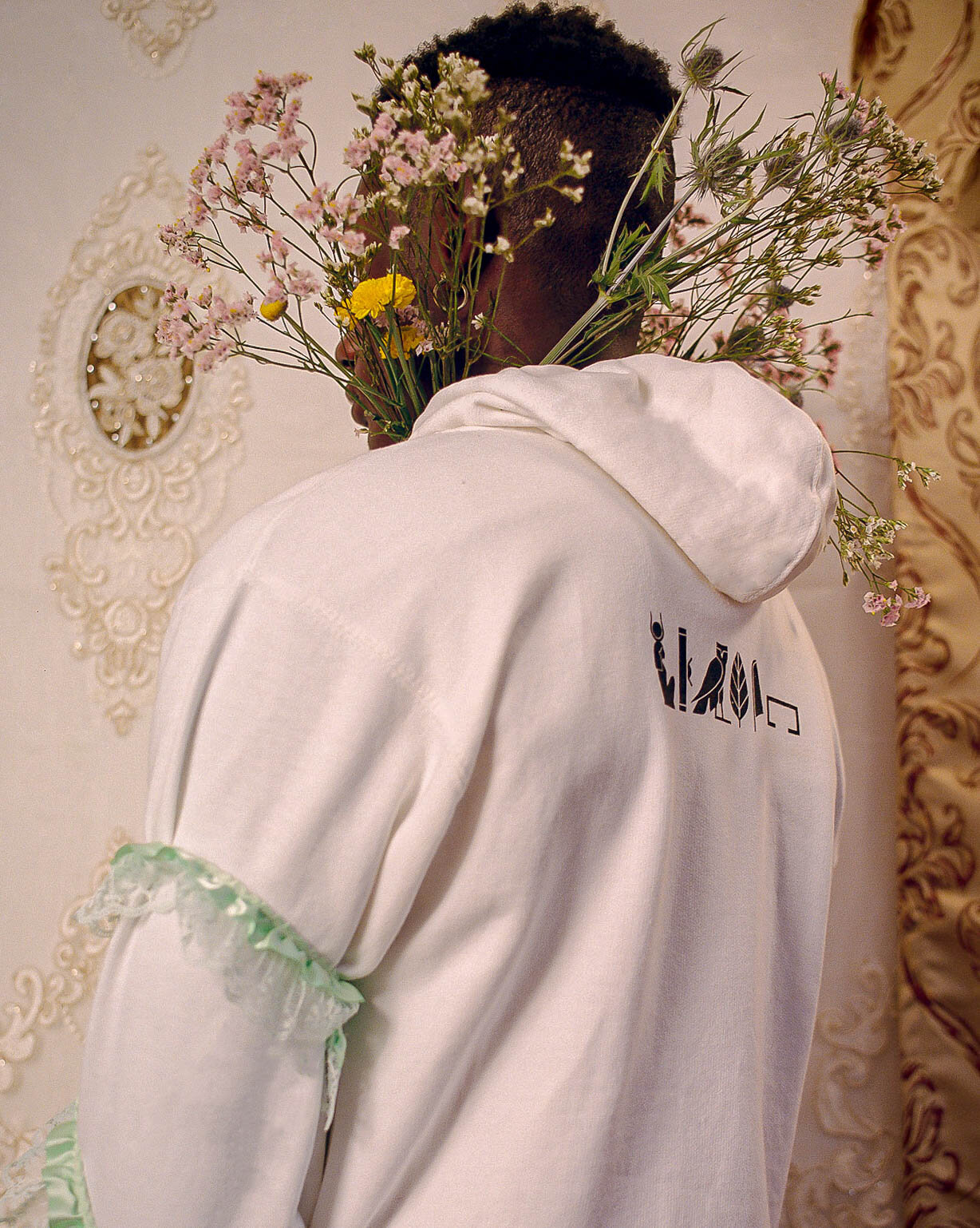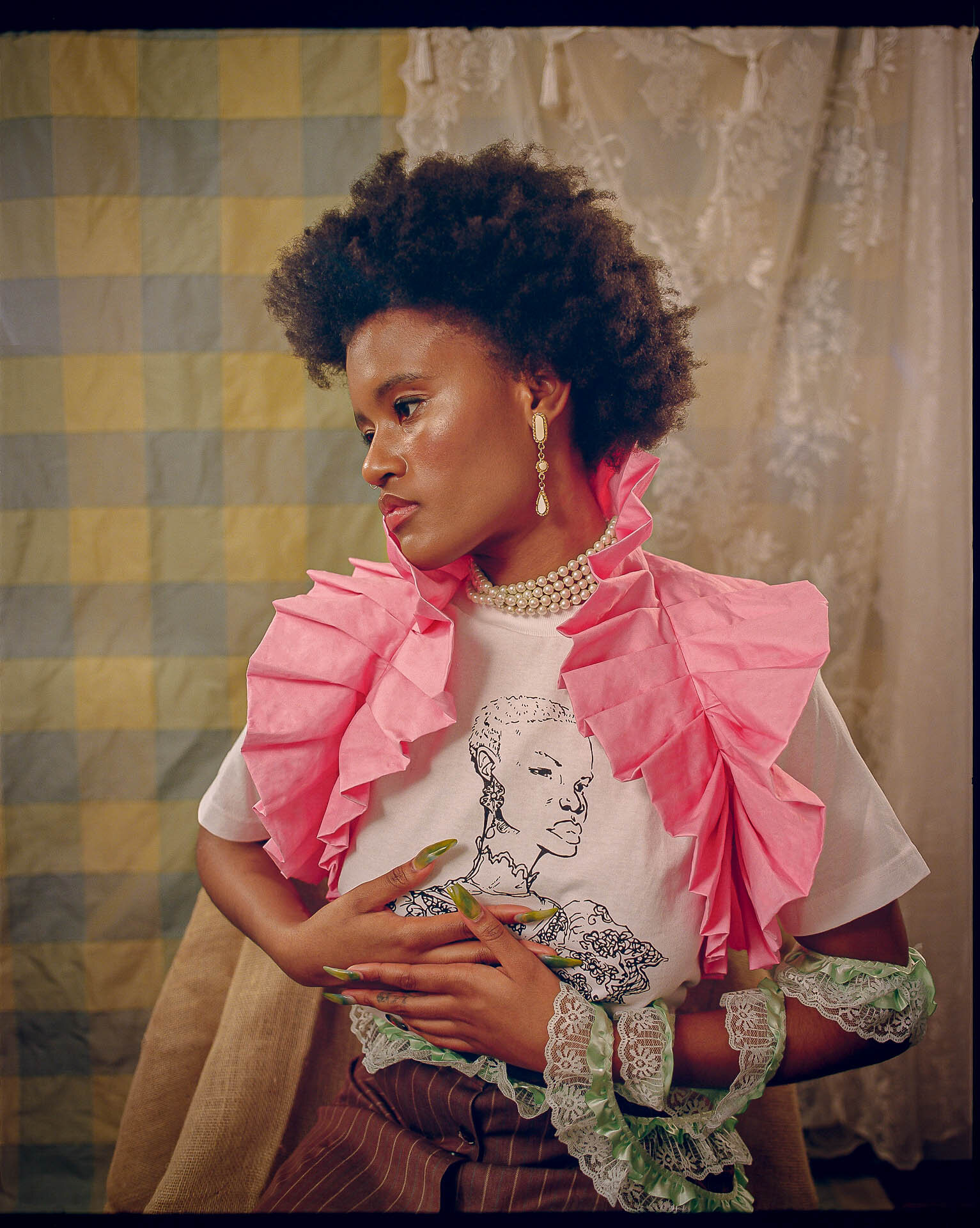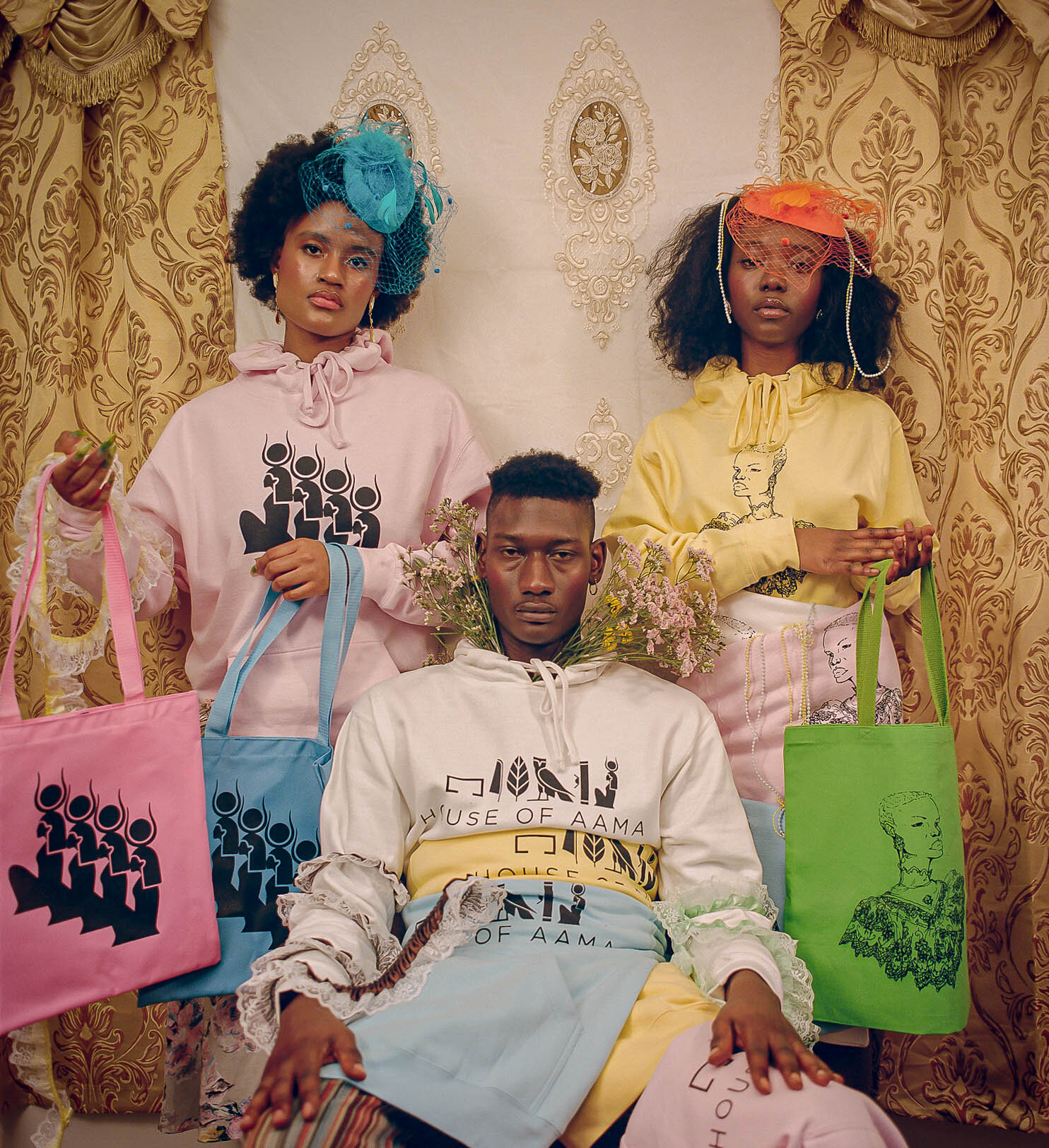Exclusive: House of Aama’s New 2020 Silhouette Collection Celebrates Black Womanhood, Shot by Quil Lemons
Akua Shabaka and Rebecca Henry; Photo by Brandon Stanciell via Vogue.
The mother-daughter team behind luxury fashion brand House of Aama wants to empower you in this time of self-isolation. With their first collection since debuting on Vogue in 2017, Rebecca Henry and Akua Shabaka created their new “Silhouette” collectibles to celebrate the Black female form and make their luxury storytelling more affordable for their core supporters.
“Silhouette” drops today, premiering on Other Suns with photographs by Quil Lemons.
After their first ready-to-wear collection “Bloodroot,” Rebecca and Akua realized there were a lot of potential customers who supported the imagery and messaging of their brand, but who weren’t buying. While Bloodroot’s silk organza and chiffon victorian dress was “an ode to Southern Creole spirituality” and “African roots,” its $700 price tag wasn’t affordable for everyone who felt a kindred spirit to their storytelling of Black heritage.
House of Aama’s new “Silhouette” collectibles change all that. Akua says this collection is “a limited-edition run depicting the female form from antiquity to the postbellum South” and is expected to be the first in a line of collectible items. With hoodies, tees, and totes priced below $100, the collection celebrates Black womanhood through the imagery of the Ancient Egyptian goddess Het-Heru and a reclamation of the southern belle.
Models wears the Het-Heru printed sweatshirt and southern belle sweatshirt from House of Aama’s Silhouette collection. Photo by Quil Lemons.
A model wears the southern belle tee from House of Aama’s Silhouette collection. Photo by Quil Lemons.
The duo took inspiration from artists Kehinde Wiley and Kara Walker, who are “similarly motivated in using the silhouette and portrait form in centering Blackness in their artwork,” Rebecca says. She was also inspired by childhood visits to Disneyland in the 1970s, where she and her siblings would pose for silhouette renderings. “I remember my mother getting those and putting them in a frame, and I was always struck by the fact that the paper was black, so my notation of silhouette was with Blackness, because it was of us, and we were all Black children,” she says. “However, a lot of the representation of silhouette form, other than the paper, there’s no Blackness associated with it. There’s a very European, high-class aesthetic associated with how the form is depicted.”
Below, we discuss how the duo translates their unique Black feminist gaze into their Silhouettes and why it’s important to center Blackness in luxury fashion.
AMIRAH MERCER: Why did you choose the image of Het-Heru, the Ancient Egyptian goddess of compassion, beauty, and love?
REBECCA HENRY: Het-Heru is part of our brand name. ‘Aama’ is an aspect of Het-Heru; it means beneficent and graciousness. So when you look at our brand logo in hieroglyphic form, you see a sitting goddess with the cow-horn crown, and that’s Het-Heru’s crown.
AMIRAH: Oh, I didn’t realize the hieroglyphics in your brand name actually spell out the name.
REBECCA: Yes, it is saying ‘Per Aama,’ and ‘per’ in Ancient Egyptian is ‘house,’ so it’s literally spelling out House of Aama.
AMIRAH: Where did you learn hieroglyphics from?
REBECCA: As a young adult in L.A. in the late 80s, early 90s, there was a lot of interest in the Black community in Ancient Egypt. There were a lot of study groups. You had the Association for the Study of Classical African Civilizations and a lot of different people who were looking at classical Ancient Egypt as a foundational Black society. I became involved in a study group in the 90s and as part of that study, the language Metu Neter was taught, and so it was during that time I was learning about reading and writing in hieroglyph.
House of Aama’s 2020 Silhouettes collectibles, photographed by Quil Lemons.
House of Aama’s 2020 Silhouettes collectibles, photographed by Quil Lemons.
AMIRAH: That’s really cool. And then the other image is this reclaiming of the southern belle. Why was it important to reclaim that image?
REBECCA: We felt it was important to reclaim that image because we specifically deal with the South — my family lineage is Louisiana on my mom’s side, South Carolina on my father’s side. The postbellum South is really critical in understanding who we are present day as Black people, in terms of both looking at it from the resistance to slavery and also looking at the survival mechanisms that were in play in slavery, and how we were able to basically survive that time period and move forward into the present day. The image of a Black woman in a victorian type of dress, for us, is an important image to focus on because the silhouette images that come from that time period focused on the aristocratic upper-class white women. And, you know, there were other people and other women present during that time period. But the non-Black woman gets to have a lot of the focus on her because there’s a lot of romanticism of that time period of plantation houses and southern gentle culture. So we wanted to focus on this other woman who was present during that time period. And we wanted to have her in a status that was just as elevated as the status of these other women. The Black woman, she’s also a woman of refinement and grace, who should be celebrated.
AMIRAH: How did you choose Quil Lemons to shoot this campaign?
AKUA SHABAKA: We went to Parsons together and graduated the same year. We always knew we wanted to work together. I was really inspired by a shoot he did with his family, and we both take a lot of inspiration from our family lineage, so I knew I wanted him to shoot this project.
AMIRAH: I’ve never heard of any other mother-daughter fashion team, so I’m curious how you guys work together and how working together has impacted your relationship.
REBECCA: We actually work together pretty well. I’m a good 30 years older than Akua and I think that works to our advantage. We look at things from a different vantage point. But we’re like any other family — we agree, we disagree, we fight, we come back together. The maternal bond enhances our work because it has a historical and archival nature to it, exploring our culture and our past together. So it gives us something we can work on and explore together.
House of Aama’s 2020 Silhouettes collectibles, photographed by Quil Lemons.
AMIRAH: What have you learned since your first collection ‘Bloodroot’ dropped in 2017?
REBECCA: A lot! [Laughs] ‘Bloodroot’ was our first official collection, and we did it without having a real industry understanding. I worked on a lot of the samples, we did a lot of our own PR and branding. It debuted in Vogue and we had a presentation during Fashion Week. We learned that designers typically spend a lot more time on funding. We funded everything ourselves initially. And because we did it that way, we didn’t have to sit around telling ourselves that this couldn’t be done. People have told us that if we knew everything that had to go into this, we probably would’ve never launched. And because we didn’t have this mindset that this is something we’re not capable of, we just did it. Even with the difficulty that this industry is experiencing at this time, we’ve learned that we can handle it. We’re doing it. We’re not one of these companies that we’re reading about every day that’s getting ready to close their doors. We’re not in a position to shut down. We don’t have a debt model, so we’re surviving through this. The fortitude and perseverance of this whole process has taught us that we can survive. We have valuable stories to tell and we have an audience that’s hungry for those stories.
AMIRAH: Why is it important for you to center the Black story within this narrative of luxury fashion?
REBECCA: There are other luxury storytelling brands. You have Alexander McQueen, who told a lot of stories about his Scottish heritage. You have your Pyer Moss and Wales Bonner, but we think that even in the midst of those brands, our stories are not present. So we feel there is a lane for us to enter into. In particular, being from the United States, having the southern heritage that is related to the Caribbean and Africa, which is not represented by the other brands. There is value in what we're doing.
AKUA: Something I realized after we launched is, I thought ‘Bloodroot’ was niche, because a lot of the narrative focused on my mother’s lineage, on hoodoo and voodoo and these different spiritualisms. But what I realized is a lot of African-American people could relate, and also people from the Caribbean and African diaspora related to our imagery and garments. We really have created our own culture within these American systems, and a lot of what we have done as Black people has been retaining culture and understanding how unique our lens is. People reach out to us like, ‘Wow, I have these same type of stories,’ so that’s why our representation is needed.
Subscribe to the Other Suns newsletter for more exclusive content on Black storytelling in fashion:
Themes: Ancient Egypt; Black womanhood; feminism; the South; luxury; storytelling; spirituality




